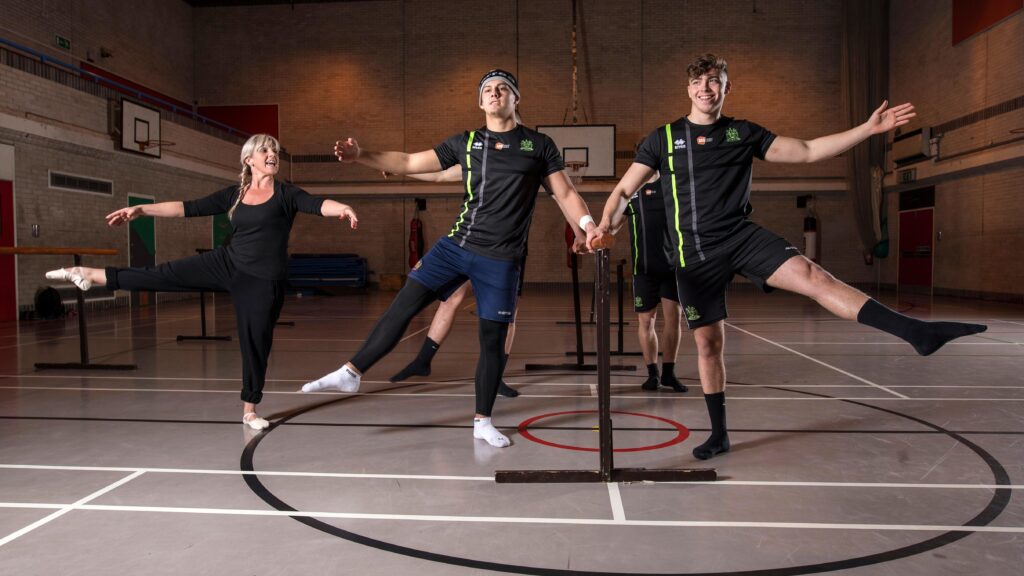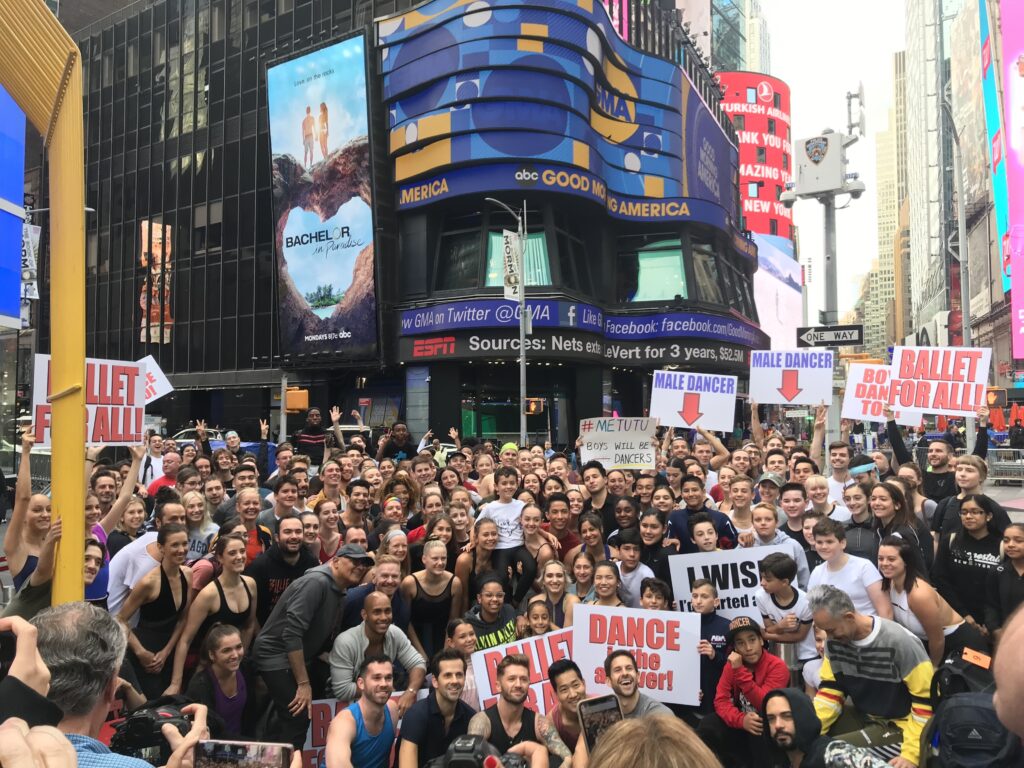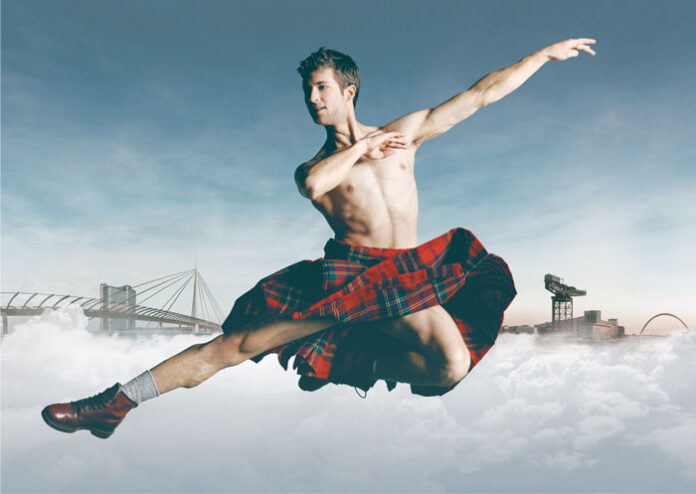Male ballet dancers are strong, flexible, and graceful, but many professionals are forced to overcome stigma along the way. Why is the judgement and prejudices from a bygone era still prevalent today?
By Andrew Cook
‘Dad, I’ve started ballet classes….’ What followed that statement was the longest 10-minute silence in my life as my father looked out the window, pondering what my new hobby would lead me to, and the implications of the profession.
Unfortunately, this is an all too common situation. For many people, not unlike the father of Billy Elliot in the famous film, the thought of a boy starting ballet immediately brings connotations of homosexuality, weakness, and femininity.
 What is the reality of ballet?
What is the reality of ballet?
Ballet training is perhaps one of the most intensive and gruelling educations that young men can receive. Whereas many young men seek out traditionally ‘masculine’ sports such as football, which include a few hour-long training sessions every week, young ballet dancers must dedicate themselves to several hours a day of training, for five to six days a week, on top of any other commitments they may have.
These levels only increase when they reach full-time ballet school. Their strenuous education includes not only a two-hour-long basic class, but specialised classes for all the nuances of dance. Men have additional classes with a slower tempo, to force them to jump to inhuman levels. Men must learn how to securely partner women, an exercise in delicacy, strength, and precision, immediately lifting their partners above their heads without showing a hint of the strain.
Male ballet dancers, or danseurs, also require intense physical workouts to prepare themselves and their bodies. Their physiology is honed to become muscled in the correct ways and stretched beyond their bodies’ natural limits.
Nor is it all physical training, as all dancers must learn a range of scientific studies including biology, as their careers are built on an innate understanding of how to exploit their bodies’ potential to the absolute maximum.
The career is a fascinating balance between artistry, athleticism and biology.
So why are they judged for this career?
For many people an evening at the ballet is a joyous occasion. The auditorium is dark, an orchestra begins a beautiful symphony, the spotlights come on, and a tall, muscled figure walks on stage carrying his partner, an entire human being, above his head with effortless grace.
But to some, all they see is a man wearing make-up, and walking around in tights.
It is a judgement based entirely on its comparison to women and it begins from a young age. This is the idea that art and dancing are a traditionally for girls, and that a boy’s masculinity is measured in sweat produced on a rugby or football ground. Although I’d wager more blood, sweat, and tears are shed behind the scenes of the stage than any football game.

So Ballet is still mostly for girls?
Absolutely not. Where would a ballerina be without her partner to lift her? Ballet requires a blend of femininity and masculinity to be complete. However, women have always outnumbered men in companies and classes, leading to a circular argument :
- There are more women doing ballet, so therefore ballet is for women.
- Ballet is for women, and that’s why there are more women doing ballet.
We have seen stereotypes broken all around our culture. While traditionally, the kitchen was a woman’s place, now we see male chefs taking the lead. We have more househusbands than ever before. Men taking care of their children is completely normalised as we now have no shame in extending paternity leave, but the male ballet dancer stereotype remains.
So why is the stereotype so hard to break?
It has been repeated for so many years. William L Earl conducted a poll on American middle-class shoppers in 1988, asking them to describe male ballet dancers in a few words or phrases. Unfortunately the answers produced were ‘Pretty boys afraid to soil themselves with honest labor’, ‘narcissistic’, ‘soft’, ‘homosexual’, and other such derogatory terms.
Time moved on, but unfortunately people’s views did not. In a sociological study from 2003, male ballet dancers gave stereotypes that they had been confronted with during their training and careers. These included ‘homosexual’, ‘weak’, and ‘wimp’. Even today, an incredibly high level of male ballet dancers and young aspirants to the profession are forced to undergo some level of harassment. Even royalty are not exempt from mockery. In 2019, ABC’s Lara Spencer publicly ridiculed Prince George for enjoying ballet classes.
While an apology was issued shortly after due to public backlash, these dismissive, off-hand comments are pervasive. Perhaps not intentionally toxic, or perhaps an attempt at light humour, these perpetuate the made-up stereotypes, and provide support for darker, and more personal bullying for young, aspiring professionals.

What are the consequences?
Ballet is incredibly gruelling work. Dancers spend their lives being told to raise their legs higher, to push their limits, to jump beyond what is feasibly possible, constantly realising that their best needs to be better. Facing stigma and ridicule on top of the difficulties of the profession can increase psychological stress on individuals, young or old.
Sometimes it’s just not possible to face these challenges, and withstand the torment of bullies as well. This can lead to so many young men, bursting with potential, but ravaged by the scorn of bullies, being forced away from continuing their passion. Perhaps the next Rudolph Nureyev, or Mikhail Baryshnikov has passed up on their career for fear of being called ridiculed by their surrounding community.
 What encouragement is out there?
What encouragement is out there?
Nowadays larger numbers of professional ballet dancers are being given a greater platform. With social media, even young aspirants can look up to and be inspired by these artist-athletes, and see the possibilities of their future.
Many internationally famous artists are also using their unique platforms to send out messages of support and solidarity. When Prince George was mocked for loving ballet, famous dancers such as Alex Wong, Eric Underwood, and an entire online community of ballet stars took to the internet and publicly condemned the senseless bullying of a child’s interests.
Thankfully we have begun to see changes in public entertainment. The movies Center Stage and Billy Elliot began a mainstream media portrayal of non-stereotypical ballet dancers. More current media are slowly breaking down these same barriers, with young aspirants citing new shows such as ‘So you think you can Dance’ being the reason they were inspired to take dance classes. In fact, a few years ago, the Royal Ballet School even accepted more male students, than female ones!
Ballet companies now also frequently offer intensive courses specifically aimed for young men. Not only do these boys have the opportunity to learn from talented, experienced male dancers who have faced similar challenges, but they can also do so in an environment surrounded by like-minded individuals.
These courses offer a community, a brotherhood of sorts. A chance to face their problems together, without judgement; and a chance to shoot for the stars and chase their dreams.
Title Image – Matthew Bourne’s Highland Fling
